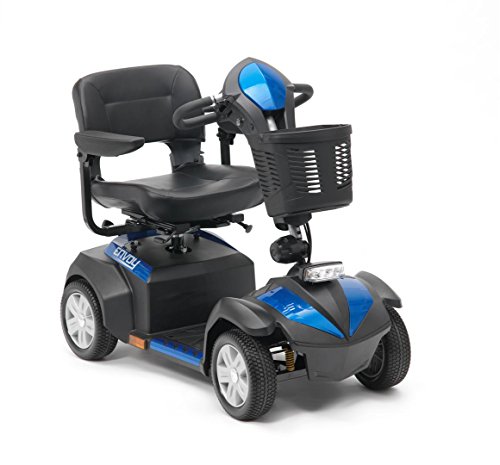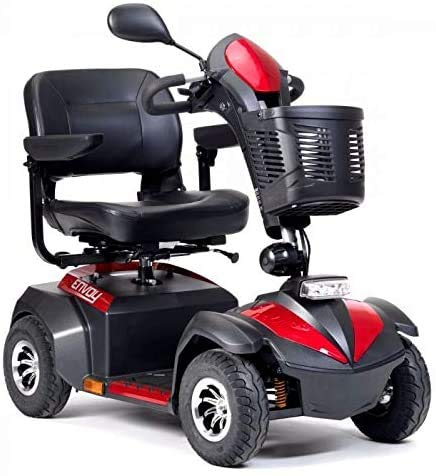Are Mobility Scooters Allowed On Pavements Tools To Ease Your Daily Li…
페이지 정보

본문
 Mobility Scooter Laws - Are Mobility Scooters Allowed on pavement mobility scooter with lithium battery Surfaces?
Mobility Scooter Laws - Are Mobility Scooters Allowed on pavement mobility scooter with lithium battery Surfaces?Many users of mobility scooters worry that they're breaking the law and causing inconvenience to pedestrians. This is especially relevant when scooters are used on pavements.
However, the reality is that these scooters are not vehicles and should only be driven on designated pathways, sidewalks and pedestrian zones. The users must also follow the rules to ensure safety and compliance with local laws.
Class 2
There are a number of considerations to keep in mind when operating a mobility scooter on the pavements. Included in this are the type of mobility scooter you own as well as the local laws and regulations and safety concerns. It is also essential to understand the different types and functions of mobility scooters. You can then choose the scooter that best suits your needs while staying within the law.
Class 2 scooters are a type of lightweight, compact mobility scooter designed for use on footpaths and pavements. They are usually limited to the maximum speed of 4mph and are not suitable for use on the roads. These scooters are usually smaller in dimensions and weigh less than their counterparts, which makes them easier to store and transport. They also have basic controls and access to pedestrian and crosswalks made of zebra.
In addition to the speed limit of 4mph, class 2 scooters must be equipped with an unladen weight limit of 150kg (or 200kg when carrying user equipment). They also must be fitted with a front and rear light to enhance visibility. They do not have to be registered with the DVLA and do not need to pay a tax on their vehicle.
The UK's pavements are a crucial part of the infrastructure of the country however, they should be used with caution. mobility scooters pavement scooters are able to be driven on pavements as long as they don't exceed the speed limit of 4mph or obstruct pedestrians. They should also avoid cycling on routes designated 'Cycle Only'. Also, they should not block public buildings, including shops and supermarkets.
Class 3 scooters are allowed on the road however they are not permitted in cycle or bus lanes. They are usually more powerful than class 2 scooters, and can travel at up to 8mph. These vehicles are more likely to have road-use features, such as indicators and lights.
It is important to obey the laws that govern the use of mobility scooters, regardless of whether you're driving a Class 2 or Class 3 scooter. Keep a safe distance you and other vehicles, and be cautious when turning. Be aware of pedestrians, and keep an eye out for older and children who may not be able to see you. Also, you should regularly check the condition of your scooter's battery and tires.
Class 3
In general mobility scooters of class 3 are only allowed to operate on pavements and pedestrian areas. However, they are able to be used on roads when the speed limit is under 50mph and provided that they are equipped with a flashing amber light. It is not recommended to use dual carriageways and to avoid driving in a bus lane.
Scooter rules and regulations vary in different parts of the UK to another. To ensure your safety as well as the safety of others, it is important to be familiar with these rules. It is also crucial to be aware of the different kinds of scooters that are available so that you can select one that will best meet your needs.
You can only use a motorized scooter on a sidewalk or in other areas for pedestrians if you are physically disabled or have a medical condition that makes walking difficult. You must be in a position to control your scooter and have good vision in both eyes. If you are not confident in your ability to operate a mobility scooter, you may go to a store where you can you ride a mobility scooter on the pavement test out various models.
Additionally mobility scooters should always give way to other pedestrians. If you are not attentive, your scooter may be stuck in the way of other people or cause collision. To avoid this happening, it is essential to keep your scooter at the right distance from other pedestrians.
Also, make sure that your scooter has the necessary safety features. This includes reflectors and other safety equipment like functional lights. These will help you be visible to other pedestrians especially in poorly-lit locations or at night. You should also avoid using headphones or mobile phones while driving as they can distract you and lead to accidents.
You must park your scooter in a certain location. The rules are different for urban and rural areas. If you live in a city area you should check with the homeowner's association for rules. Most communities have a maximum time limit for parking scooters. Some communities may have specific rules regarding the types of scooters you are allowed to use.
Road legal
For many seniors with limited mobility scooters pavement, a scooter is an absolute lifesaver. It lets them live an active lifestyle and avoid the need to go to a nursing home. Many people use their scooters to run errands, shop for groceries and do other chores in their community. But, there are some rules that must be followed when using scooters. These include giving way to pedestrians and observing traffic laws.
Most municipal laws for scooters are remarkably similar to the laws for other motor vehicles. For instance, many cities and towns restrict scooter speeds to 4mph or less when driving on sidewalks or pedestrian walkways. Drivers are also required to yield to pedestrians and to exercise caution when crossing roads and driveways. Safety flags and reflective clothing are useful, particularly if you're riding your scooter in dim lighting or at night.
It is not necessary to register or insure mobility scooters but they should be maintained regularly to ensure their safety. A trained technician should perform routine maintenance, including a complete inspection and replacement of any worn components. They should also provide advice on how to properly park and store your scooter. A scooter that is parked in a dangerous location could cause a trip hazard to pedestrians, and damage your vehicle.
It's important to note that class 2 and class 3 scooters are not road legal. They should only be used to cross the road on pavements and footpaths. These scooters should not be used on roads since they Are mobility scooters allowed on pavements not built to handle the speed and traffic of a road.
In some instances, a qualified professional may recommend that a person using a scooter undergo a road safety training. These courses are usually offered by independent groups or insurance companies and provide a thorough overview of the laws and regulations pertaining to the mobility scooters' use on public areas. These classes can assist you in your ability to safely operate your scooter and navigate the busy streets and sidewalks.
Legality
A mobility scooter 4mph scooter can be an ideal way to move around and improve independence. Many people are concerned about where they are able to legally operate their scooters. Some cities have banned them, whereas others permit them with certain restrictions. Although there aren't universal laws for scooters, there are basic guidelines that can aid you in staying legal and safe when operating your scooter.
Check with your local transportation department prior to using your scooter. These guidelines could include requirements for the design of the scooter as well as safety features and maximum speed limits. Additionally, it's important to keep your scooter maintained regularly to ensure that it's kept in good working order.
If your scooter is road-legal and meets the specifications, you are able to use it on bicycle lanes, sidewalks, and even roads. But, don't use it on bus or motorway lanes, since this could be hazardous for you and other road users. If you choose to ride your scooter on the roads, be sure it has all of the required lights and indicators to ensure that other road users can be able to see it clearly.
Making sure you are safe is the most important thing. This will help you avoid accidents and injuries, and it will also keep you feeling healthy and secure. Plan your trips ahead to ensure you have a parking space that is accessible. If you're not sure of the parking regulations in your area, you can contact the transportation department or your local advocacy group for more information.
When it comes to driving on the sidewalk you must always drive at a slow speed and give way to pedestrians. Be aware of any hazards or obstacles in the way. Wear a helmet or other protective equipment when you are riding your scooter along the sidewalk or road.
Exercise regularly to improve your coordination and balance. This will keep you safe on your scooter and could even avoid accidents. In addition, you should follow the advice of your doctor for physical exercise.

- 이전글Thesis Binding Cost Melbourne 2025 25.01.24
- 다음글10 Quick Tips For Nissan Key Programming 25.01.24
댓글목록
등록된 댓글이 없습니다.

